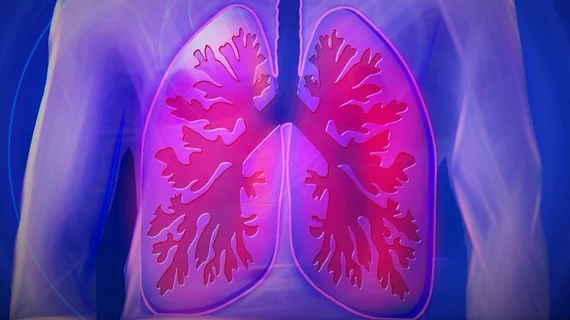In hard-hit Northern Italy, chest CT quantification a solid early predictor of COVID outcomes
Researchers at a hospital in Piacenza, one of the Northern Italian cities hardest hit by COVID-19, have found CT quantification can be used to predict how severe the disease will become in positive-testing patients whose lungs are well-aerated when they’re admitted.
The team further found such prognoses can be made using either a radiologist’s visual assessment or software-based quantification.
The findings were published April 17 in Radiology.
Dr. Davide Colombi of the University of Parma and colleagues reviewed the cases of 236 patients who were admitted to Guglielmo Da Saliceto Hospital in February and March after receiving CT scans for suspected COVID-caused pneumonia in the emergency department.
Three-quarters of the patients were male, and the median age of all patients was 68 years.
The researchers found ICU admission and/or death were most likely in patients whose lung tissue aeration was below 73% going by visual quantification or below 71% going by quantification software.
A third CT assessment, this one using a separate software tool available as an open-source option, showed absolute volume of less than 2.9 liters in the well-aerated lung was similarly predictive of poor outcomes.
All three CT-based assessments were more accurate at predicting ICU admission and mortality than prognoses made using only clinical parameters such as cardiovascular comorbidities and age over 68 years, the authors underscore.
Colombi and colleagues also found an association between adipose tissue area and worse outcome. Although body mass index was not routinely recorded in the ER for the present study, the authors note, obesity has been established as a common preexisting condition in H1N1 flu patients who had poor outcomes.
Also on that score, “previous observations suggest COVID-19 will likely have a more severe course in obese patients,” the authors comment. “For this reason, CT evaluation of adipose tissue could be an objective hallmark of obesity with prognostic significance.”
Colombi et al. conclude: “Both visual and software-based quantification of the well aerated lung on chest CT obtained in the emergency setting were independent predictors of ICU admission or death in patients with COVID-19. Quantitative assessment of the extent of lung involvement by COVID-19 pneumonia may be useful for routine patient management.”
Radiology publisher RSNA has posted the study in full for free.

